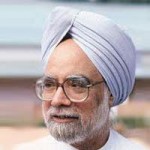Who says openly that the farm growth during the 11th Plan had virtually remained stagnant?
Has the Prime Minister even once said about the growth rate in agriculture? Or, the Planning Commission boss?
 These are supposed to be economic experts, right?
These are supposed to be economic experts, right?
If these two gentlemen don’t talk openly who else will in India? Of course we all know who among the ministers are talking at all?
So, the agri sector has some of the worst features. First, no one is talking out. No one cares to tell you the truth.
So, we have the pathetic plight of rural poverty.
It might even take another 100 years before India can hope to eradicate poverty, and assure some decent living standards for the ordinary Indians.
It is a bit sickening to hear the Prime Minister calling for raising the raising of the farm growth to 4 per cent! How? How on earth we can hope to raise the farm growth?
There is practically no credit lifeline for the average farmers.
Unless top leaders descend to the ground levels and actually meet in a surprise visit and some such direct contact only you can find rural India’s reality.
So long this doesn’t seem to be happening and there is every chance that the today’s politics under divorced politicians, sitting cozily in New Delhi environments, no one asks these people to get elected in a normal way.
Now security has growth to such great heights, there is no chance for any of our senior leaders to visit rural India. So, the high security codons and the helicopters and special jets ferry the senior leaders.
Our high Constitutional functionaries also don’t come from actual practical politics; they all come by fluke, as if the current politics and the chances in political offices come as if it is a lottery win of sorts!
The 4 per cent rate of growth in the farm sector was fixed years ago, when the Central government constituted a committee to suggest ways.
Now, even the 4 per cent won’t be enough considering the rate of decline in rural employment, the Central government backed 100 days of wages under MGREGS and the agriculture sector is in a deep crisis. No credit, no labour and the high costs of inputs and the declining land area under actual food and oilseed crops.
There is now a renewed growth in the private money lending business in rural areas.
Mr.Mohan Dharia, the senior politician who served as a minister of Planning under Morarji Desai government in a perceptive article in The Hindu newspaper has analysed the various issues that are affecting our farm growth. (July 30,2010)
His words are words of wisdom and it is for those who really care for wisdom only can benefit from his suggestions.
In India 65-68 per cent of our agriculture is rain-fed.
Who has a specific plan for rain-fed agriculture?
Is there enough credit, seeds and fertilisers for this region and are they available on time?
Are there any plan for building the required infrastructure for this type of uncertain agriculture, the dry land crops are all basic essential crops, pulses and oilseeds and the perishable crops like potatoes and others and they need cold storages and warehouses.
Already we don’t have adequate warehouses for foodgrains. Then, where is the possibility for building the dry land agri infrastructures?
Where is a suitable working agri insurance policy schemes for this basically small and marginal farmers focused agriculture?
There must be an area-specific price stabilisation funds for each major rainfed crop.
In Karnataka, for instance, we have the problem of stable prices for ragi and other such cereal crops, then red gram etc.
The Dharia Committee Report 1974,now Shri Dharia elaborates for the benefit of our experts. It had five components:
First, the production of food grains
Second, Procurement, transport and storage
Such a system only can control production, storage and distribution and also control the prices. Fourth, the system will eliminate the middlemen, the very scourge of the Indian farmers’s many miseries
Five, introduce a price index system and decide the needs of inputs.
These are all still sound ideas and worth a retry!
The same sort of rhetoric we see ,unfortunately, even now, in this day and time, about “overcoming the Malthusian scourge” as an edit page article by the well-known expert and US economist Jeffrey Sachs, who is also the director of the Earth Institute at the Columbia University.
This article with an emotionally charged title like this is actually written as an introduction to M.S.Swaminathan’s book, again, entitled as “Ever-Green Revolution”.
What the title “Ever-Green Revolution” means?
No one has cared to ask or explained!
If you read this introduction, we can see how the urban India based experts look upon the rural Indian realities.
We just give the summary of the heads under which Jeffrey Sachs concludes his essay:
Ecologically sound management, new institutions needed, demonstration of pilot projects, again ecological management, untapped reserves of food potential in Eastern India, communities, to manage to manage drought and climate change, the science of agronomy, hunger, sanitation, free trade, sustainability, again the job of sustainability etc…words and words and more words and mere words!
Image source : india.gov.in